11 Module 4- Introduction to Resource Navigation and Research
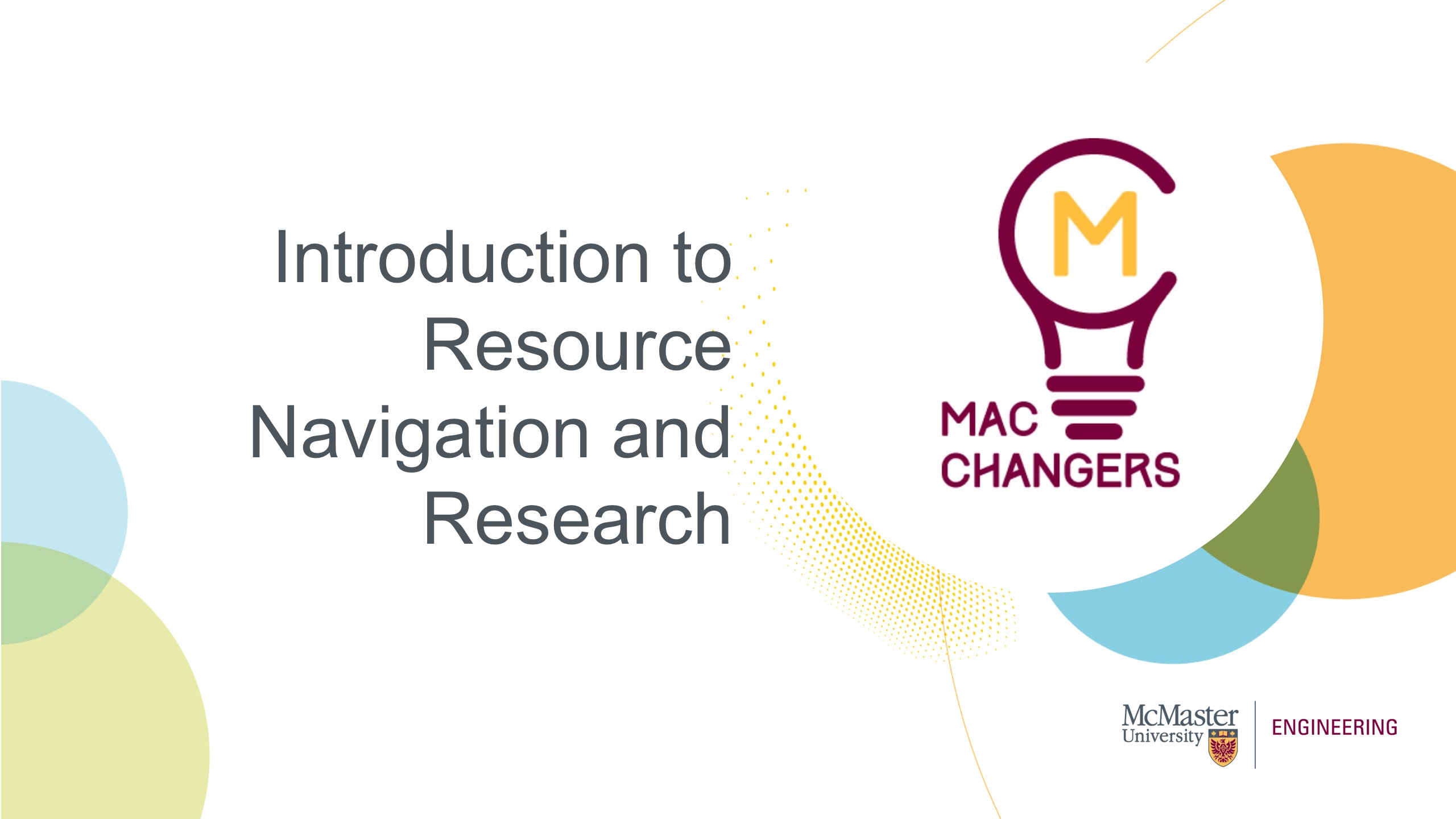
Learning Objectives
By the end of this module you should be able to…
- Understand a general research process
- Navigate Google Scholar
- Navigate UN Databases
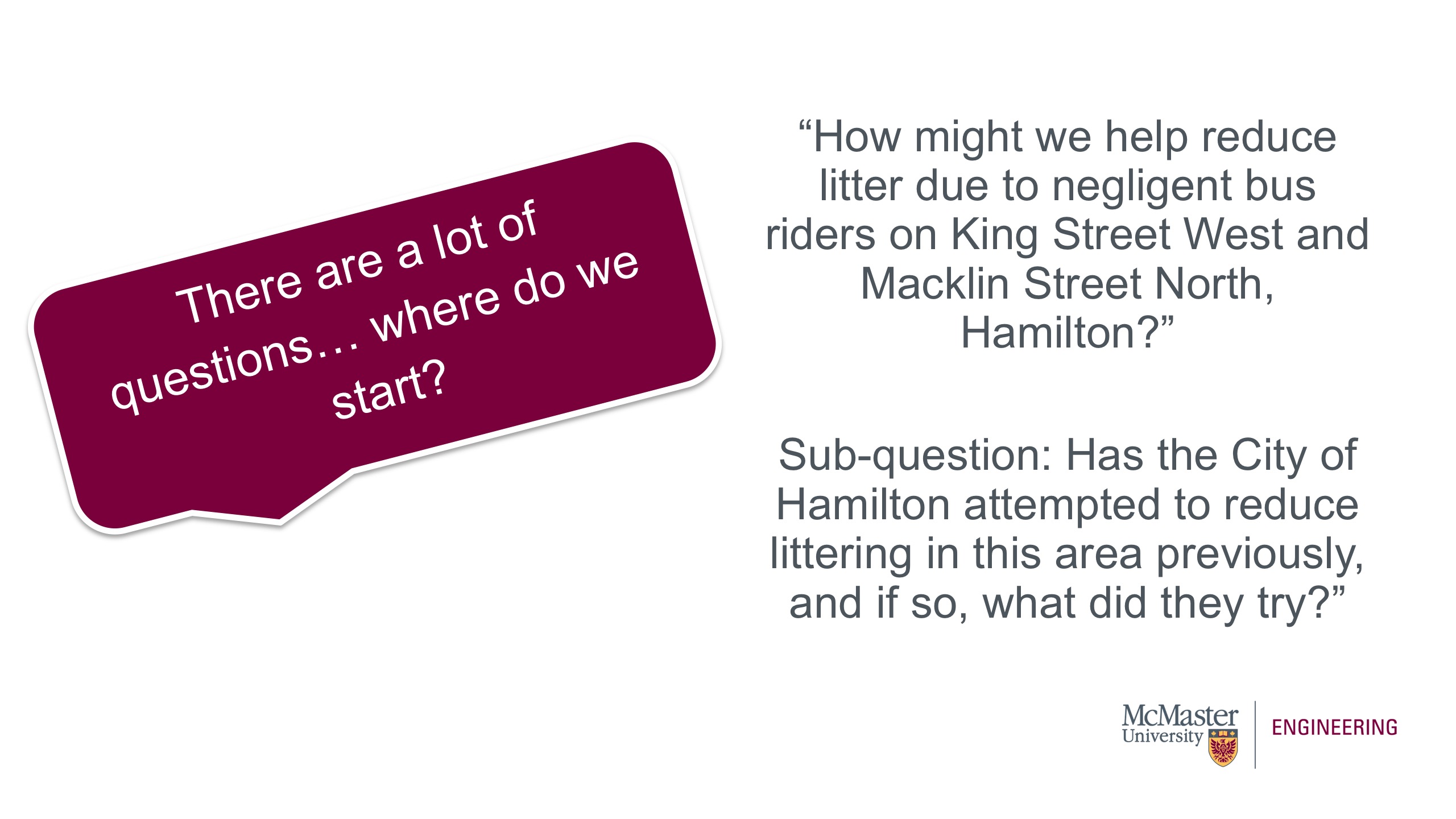
As a first step to finding answers to the larger and more complicated questions, we must break them down into smaller questions. Consider the question from last session: “ How might we help reduce litter due to negligent bus riders on King Street West and Macklin Street North, Hamilton?” In order to tackle this questions we should try asking smaller scale questions such as “ has the City of Hamilton attempted to reduce littering in this area previously, and if so, what did they try?” Go ahead and try doing this with your own questions.

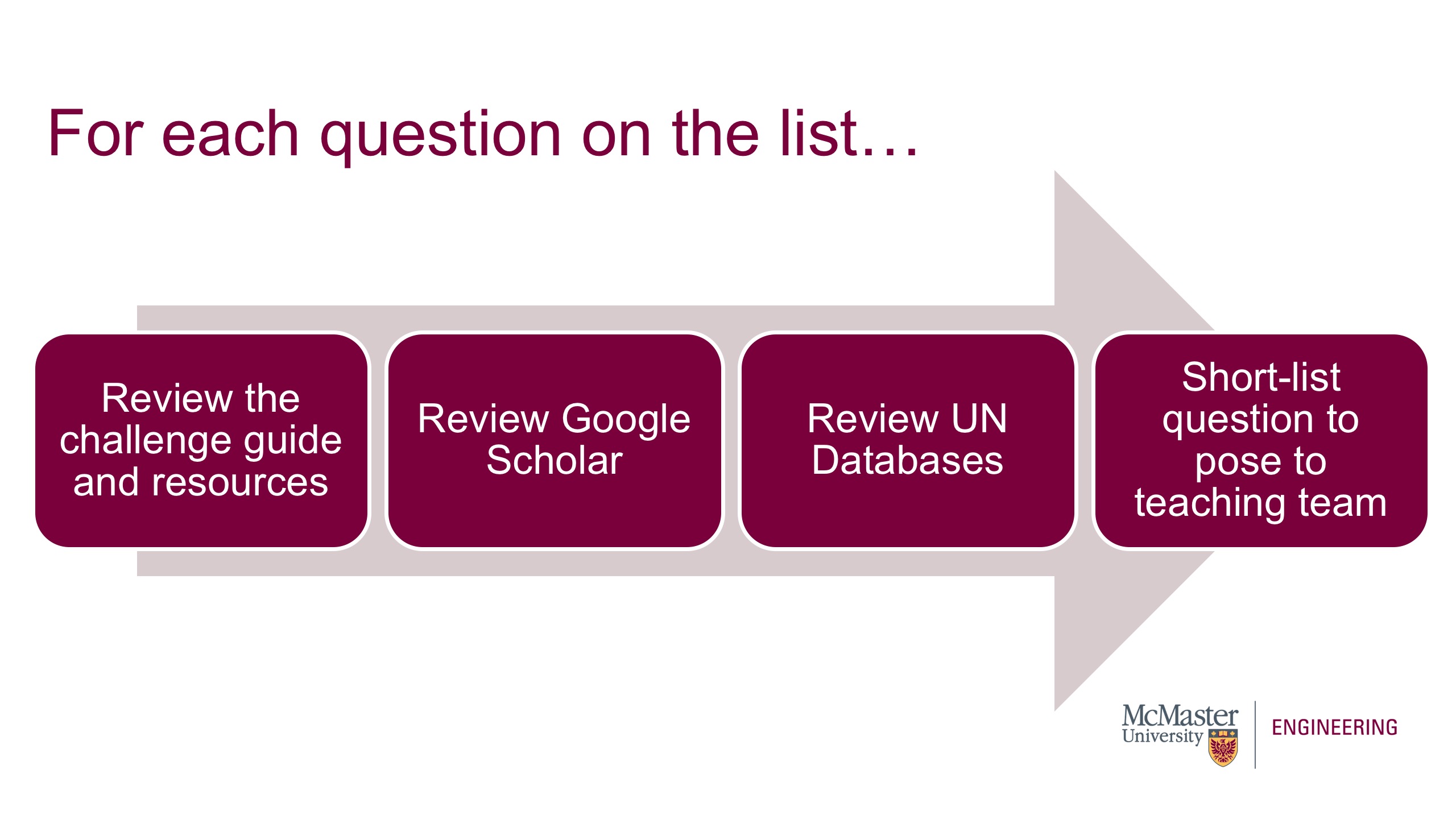
Once you have created your list of questions, use this strategy to start working your way through your questions:
- Start with reviewing any materials provided to you by our organization when you first learned about the topic. In this case, you would want to review our Challenge Guide (a link to an example challenge guide can be found in the “Problem Scoping Best-Practice Guide”).
- If you can’t find the answer there, go to Google Scholar or any other academic journal you feel comfortable using.
- If you can’t find the answer on Google Scholar, review the UN databases for information.
- Finally, if you really can’t find anything related to your question, short-list the question as a potential candidate to pose to your subject-matter experts. By the end of this work-period, you will be able to submit some questions to the stakeholders.
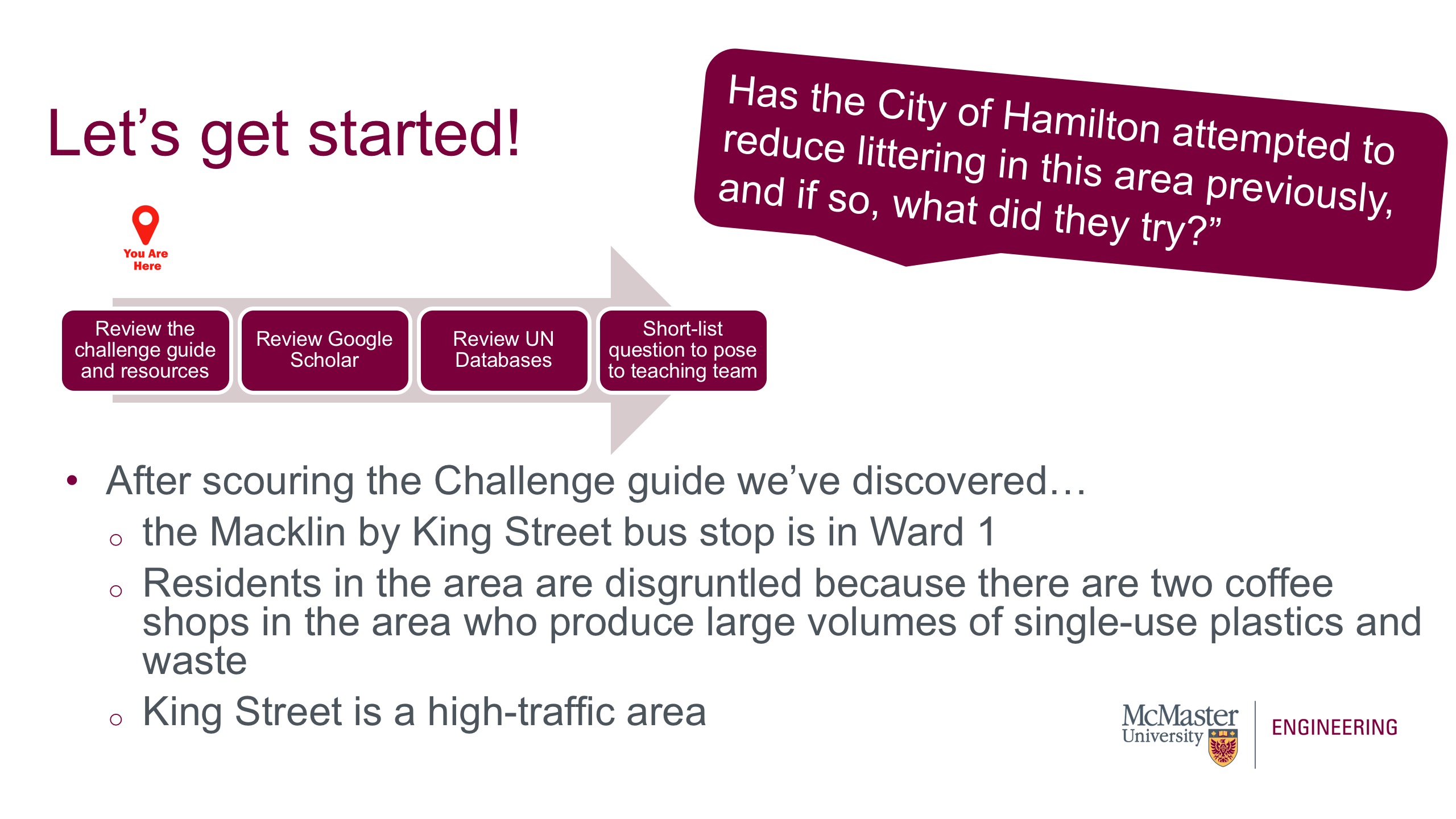
Lets take a closer look at the steps that we have listed above. Let’s pretend that looking at the challenge guides has given us some useful information such as the fact that the Macklin by King Street bus stop is in Ward one. We also learned that the residents in the area are disgruntled because two local coffee shops in the area produce large amounts of plastic. Finally, we learned that Kind Street is a high traffic area.

Note! Research is an iterative process. Feel free to update your questions as information becomes available. For example – Maybe you started by thinking the target population was middle aged, to discover it primarily concerning adolescents; that’s fine! Update as you go.
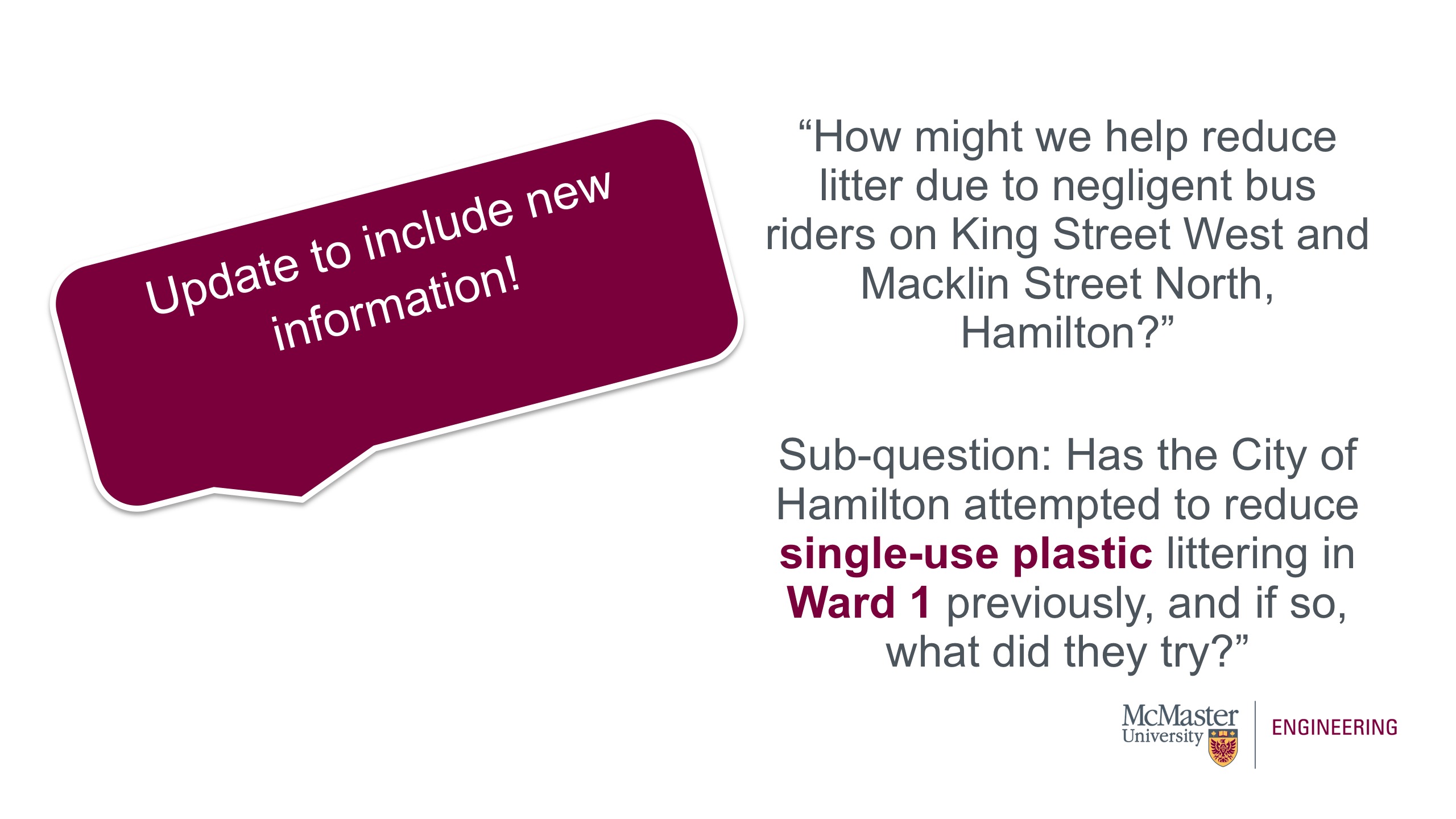
Here is an example of how you might update an existing question. For this challenge question, litter is huge and can refer to all manner of materials. Specifying single-use plastic in this ward can further scope the question and make it easier to tackle.

So, even after looking through the challenge guide, we couldn’t find the information we wanted, so let’s move to google scholar.
Google scholar is a search engine that contains scholarly material which spans across all disciplines. It is a reliable source for seeking academic information and is open to the general public to use. Note that a lot of content on Google Scholar is blocked by pall-walls. If you are not associated with an organization that pays for this content, you might not want to use Google Scholar. On the other hand, Google Scholar is more accessible than other scholarly databases which can require log-in prior to searching.
Here’s an activity to help you refine your search:
- Try going to google scholar now. [New tab will open to the google scholar launch page].
- Type in “Hamilton waste management strategies ward 1”
You might be overwhelmed by the number of returns! How could we refine this a bit? One mechanism is through something called Boolean Operators. These are database-specific terms that help you refine your search by more explicitly telling the database software what you are looking for.
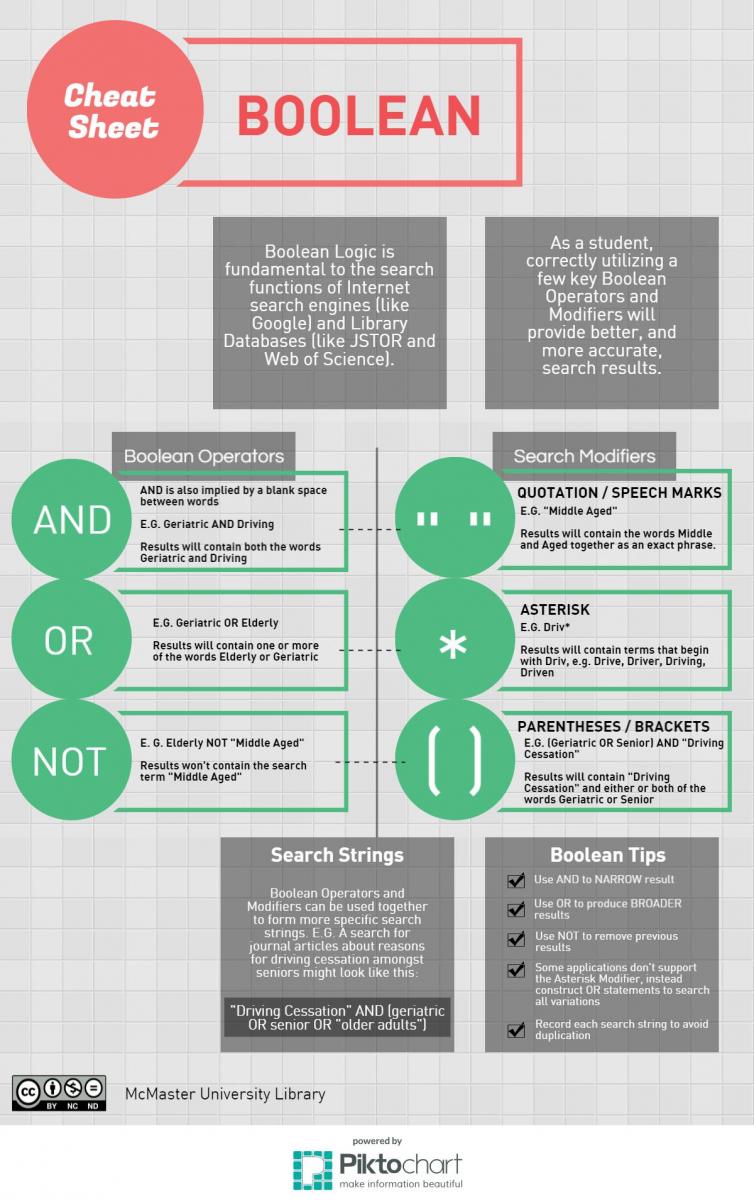
Based on the chart above, try typing: “Hamilton Ontario” AND (garbage OR litter) AND strategy. We are using four Boolean Operators here:
- “AND” will narrow search results by only allowing for resources that contain both search terms
- “OR” will broaden results by allowing resources that contain synonyms or similar content
- “” will contain exact phrasing, as written between quotation marks
- () helps to differentiate between Boolean Operators for different terms
Other ways to refine your search results include reducing resources by year, and by looking at the number of times a resource was cited. Most importantly, you want to see if the topic fits well with your question.
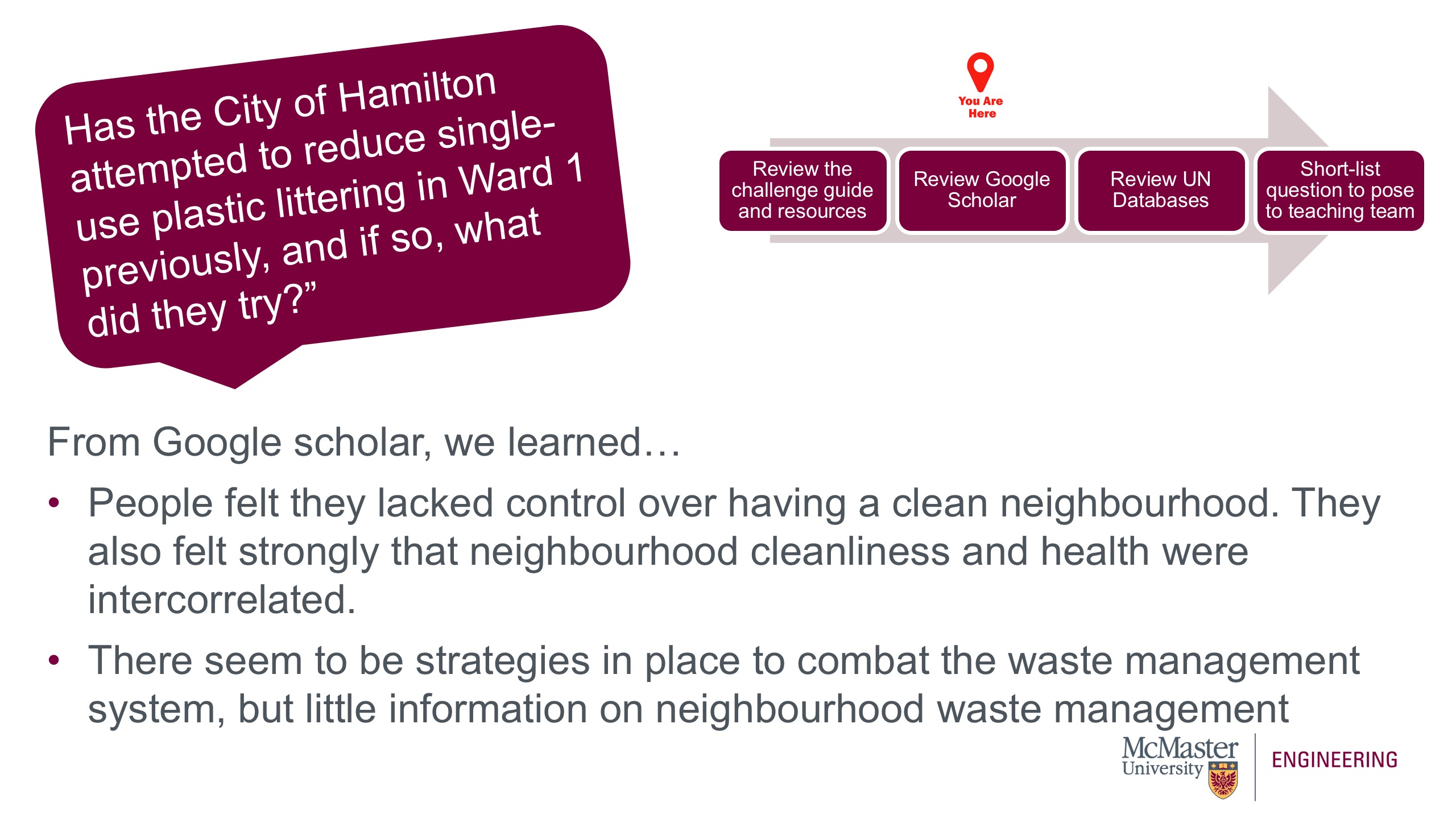
From our search on Google Scholar we learned that people don’t feel that they have control over having a clean neighborhood, and that they felt that there existed a connection between neighborhood cleanliness and health. Although there seem to be strategies in place to combat the waste management system, little information on neighborhood waste management is available.
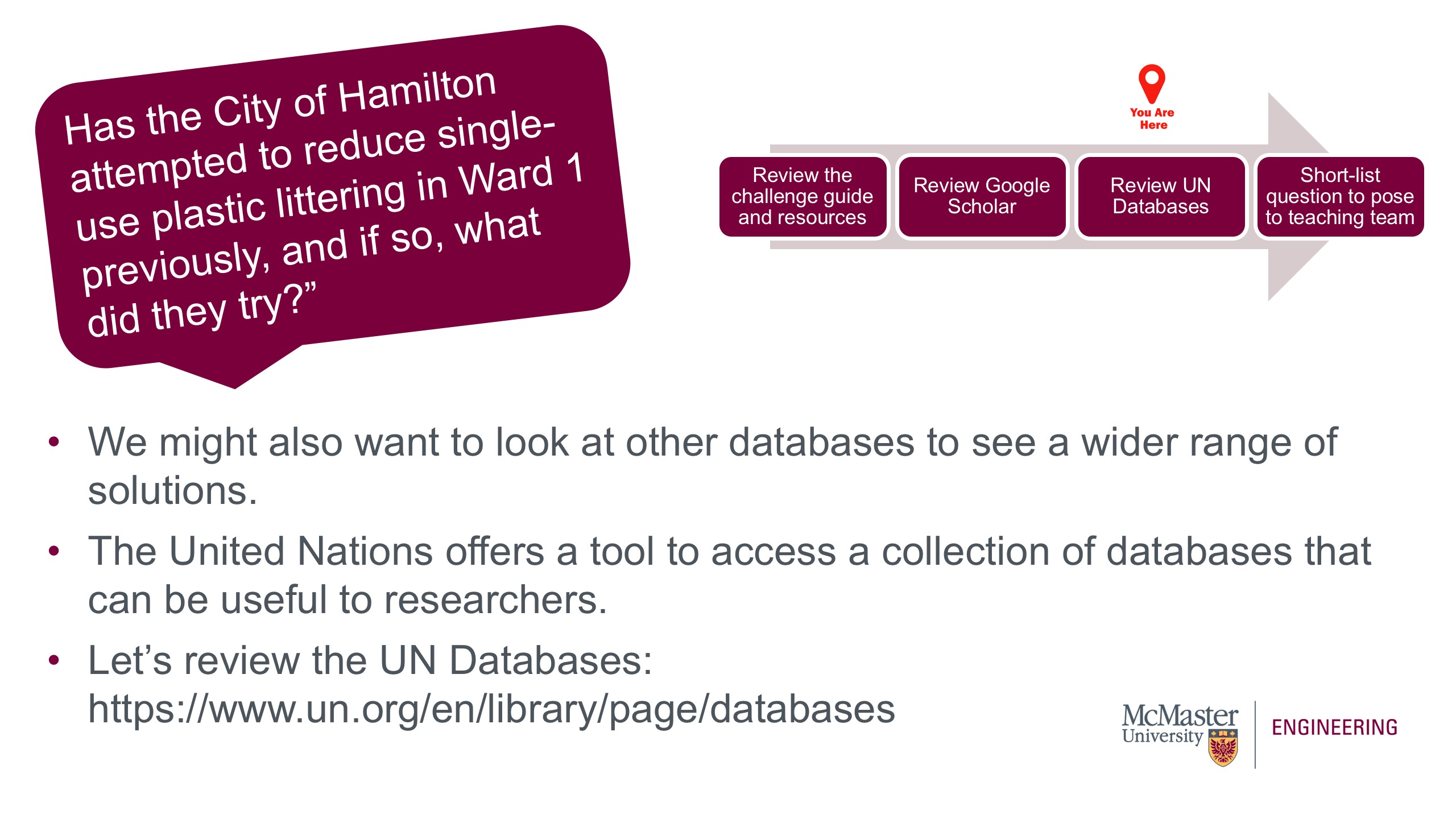
Once we have exhausted our search on Google Scholar, we want to turn to other databases. We recommend trying the UN Database, https://www.un.org/en/library/page/databases. For this example, you could try typing in “waste management strategies.”
In this database, we are specifically trying to look at what other places have done to tackle this very issue. If you have access to other newspaper articles, that can be another great way to learn this information. This will give us room to brainstorm ideas that can be directly or indirectly relevant to our topic. We are trying to look at what other places have done to tackle this very issue. This will give us room to brainstorm ideas that can be directly or indirectly relevant to our topic. The UN databases include topics that relate to development, economy and finance, international law, international relations, social affairs and more! The best part about the UN databases is that they are accessible without a pay-wall to anyone seeking information.
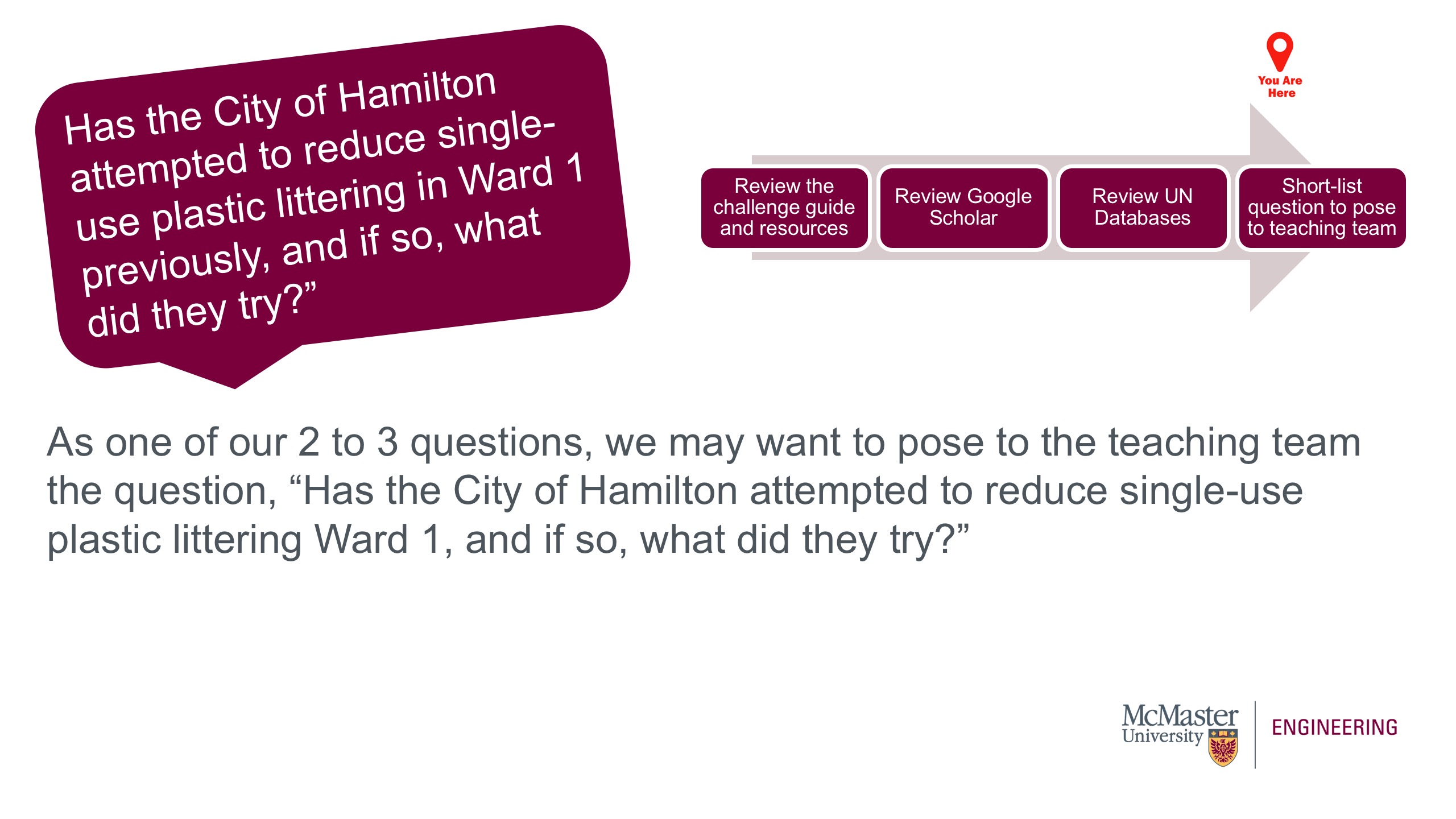
Moving on from this step we might want to ask the teaching team if the City of Hamilton Has attempted to reduce single-use plastics in Ward 1, and if so, what did they try?” Please note that we are using the “teaching team” to refer to mentors, subject-matter experts, and stakeholders. In order to reduce the number of words on the slide, we are referring to this group as “the teaching team.”
As you can see, the process that we followed not only helped us gain a better understanding of the issue that we are looking at, but also helped us formulate more specific questions that will help provide context for our solution.
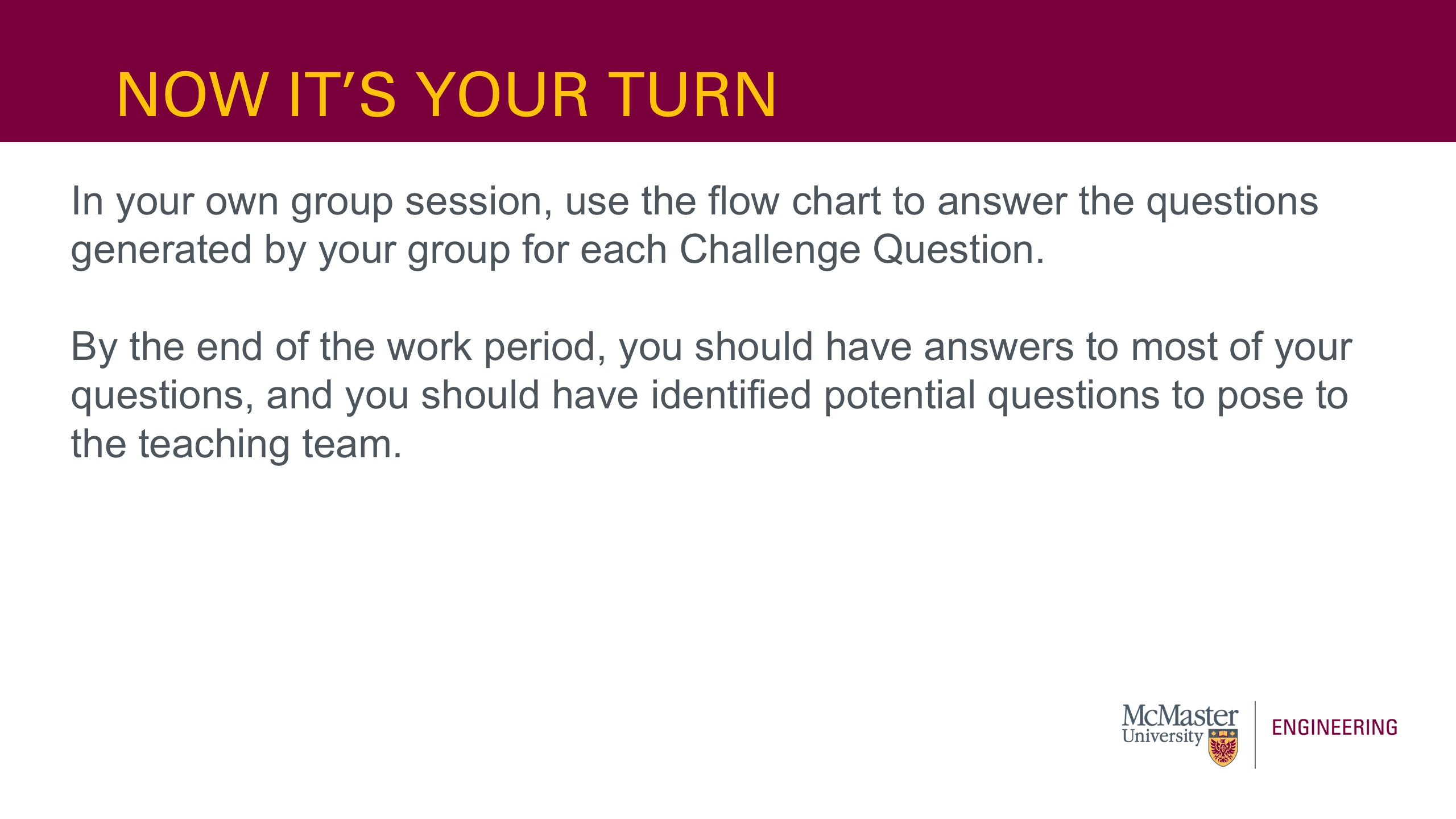
Now, its your turn! Use the process above to generate questions about your chosen challenge area and complete some preliminary research on your issue.

